Victor Schertzinger – Early Film Giant
Early Film Giant, Victor L. Schertzinger
By Donald Seligman
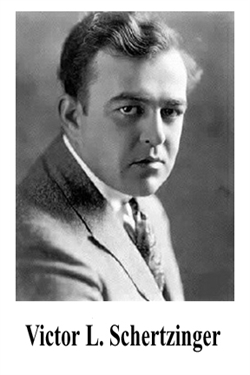
His star was among the first installed on the Hollywood Walk of Fame. Yet, if you came across it, you might ask, “Who was Victor Schertzinger?”
Mabel Norman named him her finest director ever. They became so close, that his nickname for her was “Ma,” and hers for him was “Pa.” Schertzinger was known to have a tactful, genial personality, and was one of the few directors who was able to work successfully with the temperamental silent film star Charles Ray, eventually directing Ray in 21 films.
Schertzinger was a true pioneer in the early film industry. A classically trained musician and composer, he made his mark through many breakthrough initiatives. He is said to be the first composer to write a musical score for a movie, when Thomas Ince commissioned him to write the orchestral accompaniment for his silent film, “Civilization” in 1916. He directed “Redskin”, one of the first Technicolor motion pictures in 1929. He was one of the first to bring sound to the industry with “Nothing But the Truth” in 1929. He composed the music for one of the first musicals, “The Love Parade” with Maurice Chevalier and Jeanette McDonald in 1929. He was one of the first to bring opera to the motion pictures when he directed “One Night of Love” starring Grace Moore in 1934, and later “Mikado” in 1939. He is reputed to be the first to write popular music for the movies and many of his songs endure: “Dream Lover,” “I Remember You,” “Paris,”, and “Tangerine.” His song, “Marquita” sold more than 4 million copies in 1941.
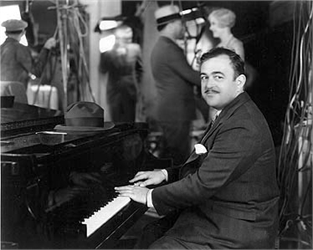
Nevertheless, Victor Schertzinger is today virtually unknown. He is the only silent film director to have also been a classically trained musician. Born in Mahanoy, Pennsylvania in 1888, his father was a diamond broker, and his mother, Pauline von Weber, the niece of the German composer Karl Maria von Weber, had been court violinist to Queen Victoria. A child prodigy, Victor began studying violin at the age of four, and he appeared as soloist with the Victor Herbert Symphony Orchestra in Philadelphia when eight. By the age of ten, he was touring the world with John Philip Sousa’s orchestra.
He studied music at Brown University in Providence, Rhode Island, and then at the University of Brussels in Belgium. After graduating, he toured Europe as a concert virtuoso before moving to Los Angeles to conduct theatre orchestras.
He believed his musical background was one of the qualities that allowed him to succeed in his silent film career. “The screen will come to perfection,” he said, “not when it has been given a speaking voice…but when wordless music has been thoroughly synchronized with wordless pictures to establish any shade of desired mood.”
Schertzinger directed 103 films between 1917 and 1942. He won the first Oscar in the Best Original Score category in 1934 for “One Night of Love.” He also received a Best Director nomination for the film. But he is likely best remembered as the first director of the “Road” pictures starring Bob Hope, Bing Crosby and Dorothy Lamour.
Schertzinger married Julia E. Nicklin in 1914, and they had two daughters, Paula and Patricia. His life personified the glamorous Hollywood lifestyle. His palatial 17-room mansion designed by architect and landscaper Mark Daniels in 1921 is among many situated in Los Feliz and the Hollywood Hills that exceed more than an acre of property. These dream estates provide a unique glimpse into Hollywood’s golden age.
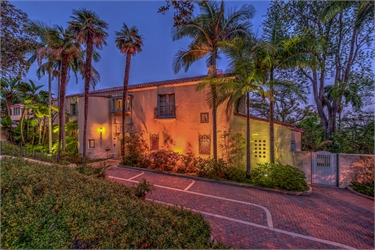
The Spanish-Mediterranean manor includes painted and coffered ceilings, mural embellished doors and wall panels, elaborate tile work, stained glass, and elaborate baroque window treatments. The extensive Italianate gardens include a whimsically designed swimming pool and pond, statuary, a giant tennis court, Roman-style pavilions, a chauffeur’s quarters and garages for five cars. He drove a Duzenberg and his wife travelled in a chauffeur-driven Pierce Arrow. There is an original pipe organ in the living room, with separate side rooms filled with the dozens of pipes. The five bathrooms are unusually generous for the period. There is a cottage that he had built for his young daughters in the garden that looks like it was lifted intact from the Wizard of Oz’s Munchkinland. The staff included a nurse, a butler, a chauffeur and a cook. The entire environment exudes confidence, romance, and an elaborate aesthetic sensitivity that embodies the excesses of the Hollywood elite.
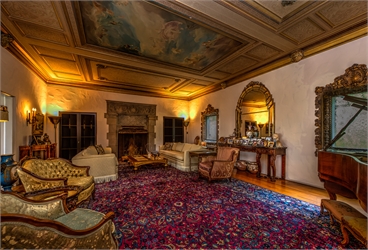
Schertzinger died unexpectedly from a heart attack in 1941 at the age of 53. He had just finished directing “The Fleet’s In” which was released in 1942. He is buried at Forest Lawn in Glendale.
Seligman is the author of Los Feliz in the Silent Film Era: The Heart of Los Angeles Cinema 1908-1930. The lavishly illustrated book, recently published by the Los Feliz Improvement Association, is available from their website ( www.lfia.org) and at Skylight Books for $35.)
Thanks to Aaron Montelongo of Sotheby’s International Realty West Hollywood for his invaluable assistance. He can be reached at (310) 205-0305. www.Aaron Montelongo.com\
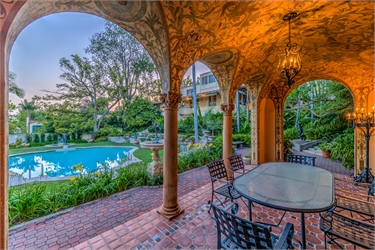 Photos by Richard Horn
Photos by Richard Horn